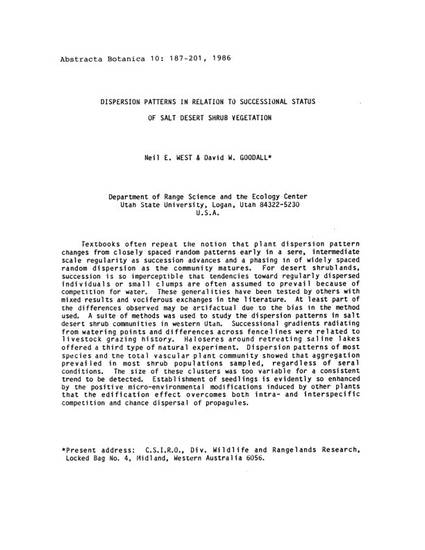
Article
Dispersion patterns in relation to successional status of salt desert shrub vegetation
Abstracta Botanica
(1986)
Abstract
Textbooks often repeat the notion that plant dispersion pattern changes from closely spaced random patterns early in a sere, intermediate scale regularity as succession advances and a phasing in of widely spaced random dispersion as the community matures. For desert shrublands, succession is so imperceptible that tendencies toward regularly dispersed individuals or small clumps are often assumed to prevail because of competition for water. These generalities have been tested by others with mixed results and vociferous exchanges in the literature. At least part of the differences observed may be artifactual due to the bias in the method used. A suite of methods was used to study the dispersion patterns in salt desert shrub communities in western Utah. Successional gradients radiating from watering points and differences across fencelines were related to livestock grazing history. Haloseres around retreating saline lakes offered a third type of natural experiment. Dispersion patterns of most species and the total vascular plant community showed that aggregation prevailed in most shrub populations sampled, regardless of serai conditions. The size of these clusters was too variable for a consistent trend to be detected. Establishment of seedlings is evidently so enhanced by the positive micro-environmental modifications induced by other plants that the edification effect overcomes both intra- and interspecific compétition and chance dispersal of propagules.
Disciplines
Publication Date
1986
Citation Information
Neil E. West. "Dispersion patterns in relation to successional status of salt desert shrub vegetation" Abstracta Botanica Vol. 10 Iss. 2 (1986) p. 187 - 201 Available at: http://works.bepress.com/neil_west/161/
